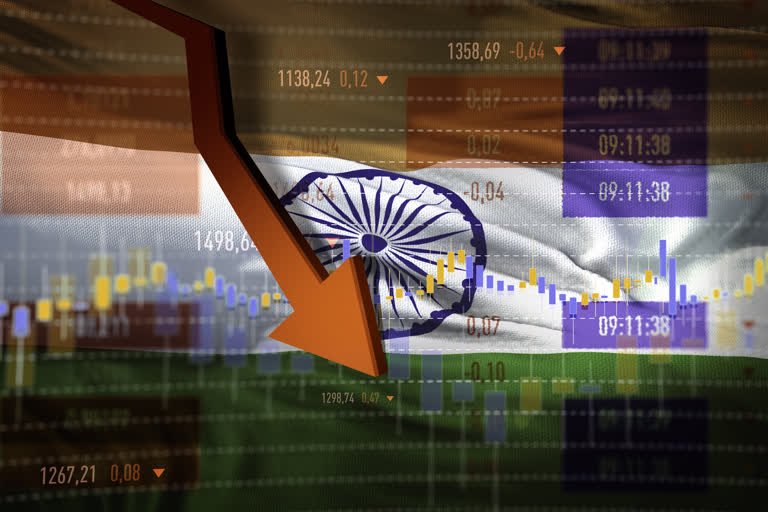New Delhi: Goldman Sachs has forecast a "deeper recession for India" with an estimate of real GDP falling by 5 per cent in the financial year 2021.
"Our estimates now imply that real GDP falls by 5 per cent in FY21 versus minus 0.4 per cent in our previous forecast. The minus 5 per cent growth we forecast for FY21 would be deeper compared to all ‘recessions' India has ever experienced," Goldman Sachs said in a research.
Goldman Sachs is already forecasting a massive cut in the quarterly numbers. "We are making further significant adjustments to our GDP forecasts for India. We now forecast GDP growth of minus 45 per cent (quarter on quarter annualized) in Q2 (compared to minus 20 per cent previously)," it said.
However, it has upgraded expectations of a rebound in Q3, with a 20 per cent quarter on quarter annualised GDP gain in Q3 (compared to 10 per cent before). For Q4 and Q1 of next year, GS has kept projections unchanged at 14 per cent and 6.5 per cent, respectively.
"Our estimates now imply that real GDP falls by 5 per cent in FY21 (vs -0.4 per cent in our previous forecast). Our global team is now forecasting growth to be at -3.6 per cent in 2020 (compared to -2.5 per cent when we last published our India growth forecast on April 17), with risks remaining on the downside. This is close to a 7 pp downward revision since early this year," Goldman Sachs said.
The deeper trough in Q2 forecasts reflects the extremely poor economic data, GS said.
Read more:RBI may extend moratorium on repayment of loans for three more months: Report
"We expect a strong sequential mechanical rebound in Q3. However, beyond Q3, we expect only a gradual recovery, as the targeted policy support continues to be tepid compared to other emerging economies, and far less than most advanced economies," it said.
In its research on the stimulus package, brokerage firm Bernstein asked Finance Minister: "Is the aim to revive GDP, or to reach the 20,000,000,000,000 number?"
Bernstein said India's desire to announce a large economic package, something that shows the world that they care about the economy and are willing to match global stimulus numbers, was perhaps the driver for the claim of a large package ($ 280 billion, 10% of GDP).
Bernstein said the package was "aimless" and a "lost opportunity". "While the package started on important aspects but the need to announce measures that add up to this top down number, made the entire package aimless, with several generic announcements which should ideally, have been a part of a normal economic agenda. Overall, we see it as a lost opportunity," it said.
"The plan in our view, was a general economic agenda and lacked substantive decisions to support consumption, promote manufacturing and even the broader reforms lacked the spark while urban and corporates (irrespective of impacts) were ignored. We believe that equity markets are likely to be less enthused, with the package, as it is less likely to support the economy in the near/medium term," it said.
HSBC said in a note the last two tranches of the 10 per cent of GDP economic package focused on structural reforms and increase in employment guarantee outlays.
The overall package focused more on medium-term supply-side measures, and funding via future public-sector liabilities. "As such, the central government fiscal cost is likely to be contained at 1 per cent of GDP; we forecast the general government fiscal deficit at 10 per cent of GDP; and growth to contract 3 per cent year on year in 2020," HSBC said.
(IANS Report)



